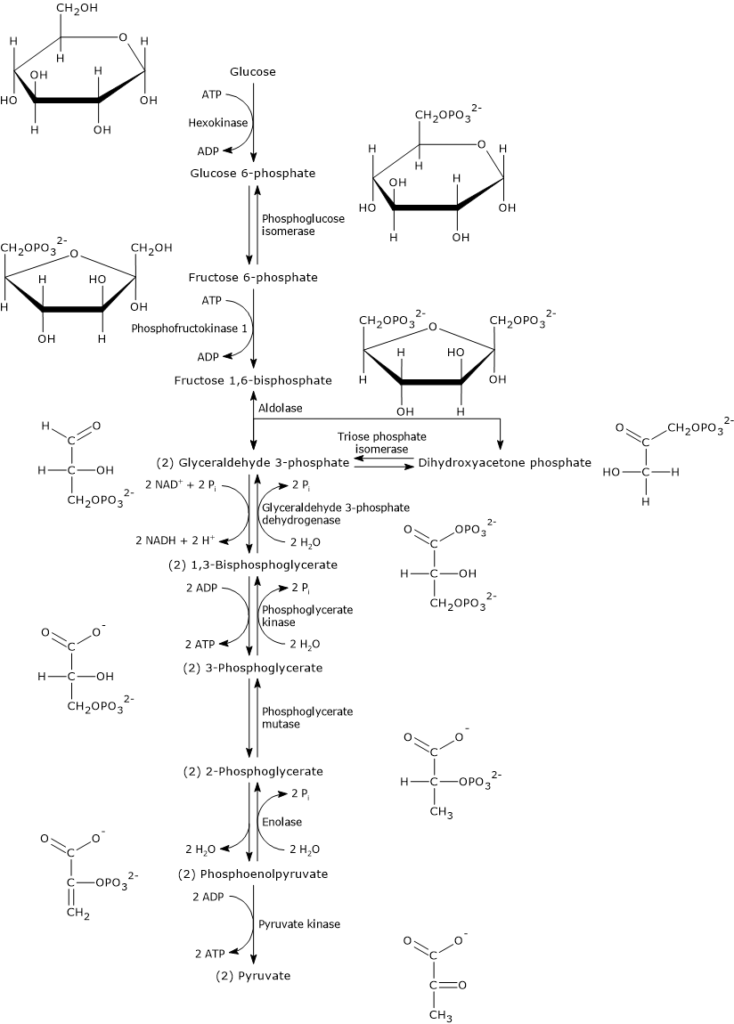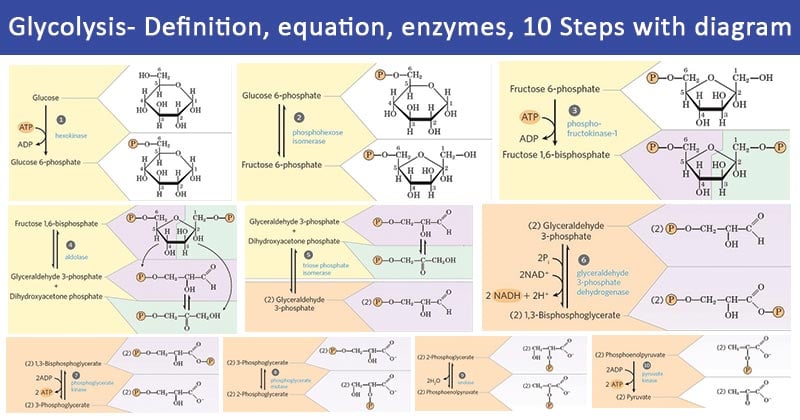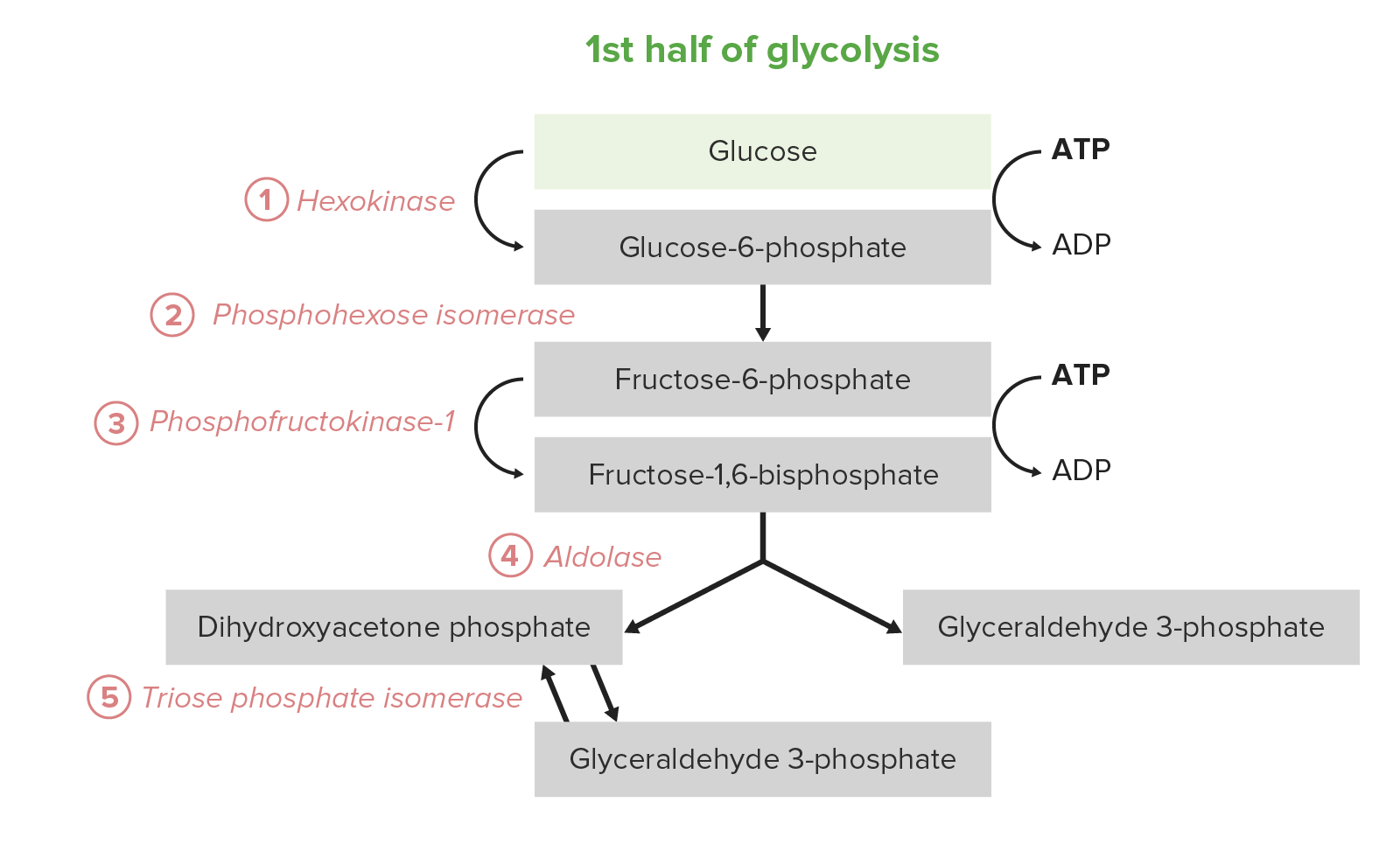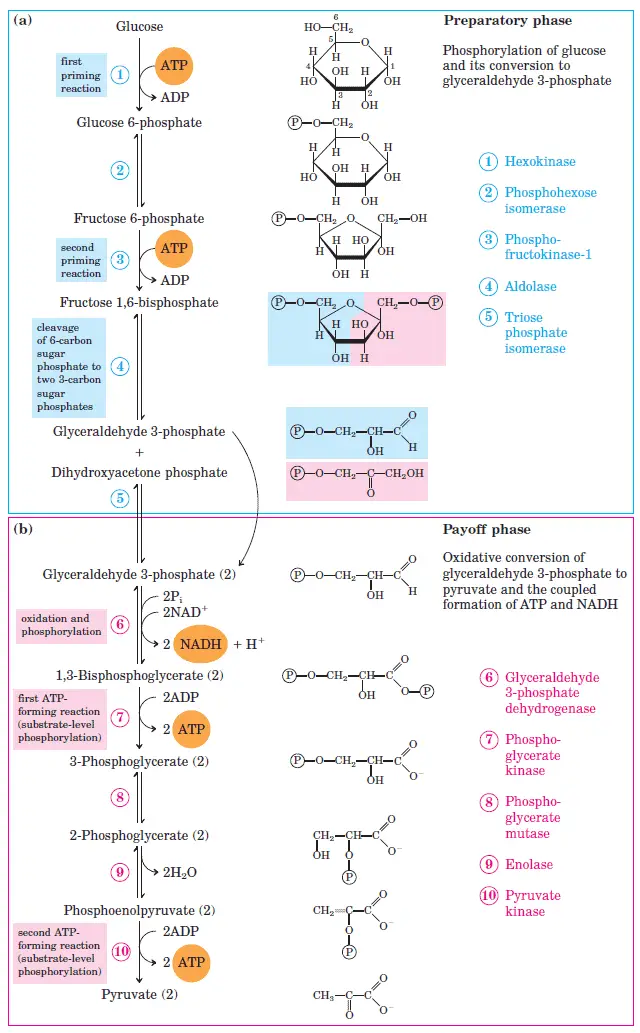Which Biochemical Process Is Not Used During Glycolysis
Which biochemical process is NOT used during glycolysis. In the absence of oxygen glycolysis allows cells to make small amounts of ATP through a process of fermentation.

Glycolysis Steps Enzymes And Products Tuscany Diet
Microbes are often identified using biochemical tests that detect specific enzymes of metabolic pathways.

. Glycolysis is the process by which glucose is broken down into two pyruvat6e molecules. If the product is lactate or carbon dioxide plus ethanol there is no net oxidation. During glycolysis process 2 ATP molecules and 2 NADH molecules are produced.
In the presence of oxygen glycolysis is the first stage of cellular respiration. If the product is pyruvate some oxidizing agent must be used to restore NADH to NAD although that reaction is not a part of glycolysis per se. Coli typically ferments lactose whereas Shigella does not.
It takes place in the cytoplasm of both prokaryotic and eukaryotic cells. FADH is not produced during glycolysis. The process does not use oxygen and is therefore anaerobic.
In this reaction glyceraldehyde-3-phosphate is converted to 13-bisphosphoglycerate which involves the oxidation of an aldehyde group to a carboxylic acid group. Nursing questions and answers. A substrate-level phosphorylation B oxidation-reduction C carbohydrate catabolism D beta oxidation E.
Rm H In this pathway oxygen is not needed and it is a common pathway for aerobic and anaerobic respiration. Glycolysis occurs in virtually all living creatures including all animals all plants and almost all bacteria. Glycolysis is the pathway that converts glucose into pyruvic acid and yields energy in the form of ATP and rm NADH.
In this phase the starting molecule of glucose gets rearranged and two phosphate groups are. The fermentation reactions utilize the pyruvate formed by glycolysis and in a couple of different ways use it as an ele. In muscle fiber fructose may be phosphorylated into fructose-6-phosphate and enter directly the glycolytic pathway.
Which biochemical process is NOT used during glycolysisenzymatic reactionsoxidation-reductionbeta oxidationcarbohydrate catabolismsubstrate-level phosphorylation beta oxidation A bacterial culture grown in a glucose-peptide medium causes the pH to increase. Glycolysis itself is the splitting of glucose into two molecules of pyruvic acid. Glycolysis takes place in the cytosol of a cell and it can be broken down into two main phases.
16 Which biochemical process is NOT used during glycolysis. 16 Which biochemical process is NOT used during glycolysis. Glycolysis is the first step in cellular respiration which is the final step in the process of converting food to chemical energy.
A chemoautotroph B chemoheterotroph C photoautotroph D photoheterotroph Which biochemical process is NOT used during glycolysis. 16 Which biochemical process is NOT used during glycolysis. Oxygen does not directly participate in any of the reactions of glycolysis.
This is the first step of the preparatory phase where glucose is activated by the involvement of the enzyme called hexokinase and converted into glucose 6 phosphate. Correct option is D Glycolysis is the metabolic pathway that converts glucose into pyruvate. That oxidizing agent may be oxygen but in some organisms it can be other substances.
Glycolysis is the first pathway used in the breakdown of glucose to extract energy. Fructose does not undergo glycolysis but fructolysis instead. An ATP molecule is used during this step as a phosphate donor.
A substrate-level phosphorylation B oxidation-reduction C carbohydrate catabolism D beta oxidation E enzymatic reactions Answer. Which of the following uses glucose for carbon and energy. A substrate-level phosphorylation B oxidation-reduction C carbohydrate catabolism D beta oxidation E enzymatic reactions.
Fructolysis does not yield in energy production but consumption it requires ATP. The energy-requiring phase above the dotted line in the image below and the energy-releasing phase below the dotted line. Answer 1 of 2.
Nearly all living organisms carry out glycolysis as part of their metabolism. 68 Which biochemical process is NOT used during glycolysis. Glycolysis itself does not use oxygen.
However the two molecules of NADH that are produced must be dealt with in some way. This process takes place in the cytoplasm of all living cells. It is the first phase of cellular respiration and occurs in both aerobic respiration and anaerobic respiration.
If a pure culture of each bacterium was placed in a tube containing lactose as the only food source. Thus option D is correct and other options are incorrect. The process does not use oxygen and is therefore anaerobic.
The overall process of glycolysis is an oxidation reaction. Glycolysis is the first step in the breakdown of glucose to extract energy for cellular metabolism. Learn more about the steps of the glycolysis pathway and the.
The electrons that are lost by glyceraldehyde-3-phosphate are taken up by NAD which gets reduced to NADH. Glycolysis can occur with or without oxygen. It was probably one of the earliest metabolic pathways to evolve since it is used by nearly all of the organisms on earth.
A substrate-level phosphorylation B oxidation-reduction C carbohydrate catabolism D beta oxidation E enzymatic reactions. BYJUS Online learning Programs For K3 K10 K12 NEET. Glycolysis takes place in the cytoplasm of both prokaryotic and eukaryotic cells.
This is a different metabolic pathway that takes mostly place in the liver. D D beta oxidation. Each step of the process is now described as following.
However during anaerobic respiration or fermentation pyruvate molecules from glycolysis are not converted to acetyl CoA but they are converted to lactate by lactate.

Glycolysis Definition Equation Enzymes 10 Steps Diagram

Glycolysis Biochemistry Video Lecturio Medical

Glycolysis All Steps With Diagram Enzymes Products Energy Yield And Significance Laboratoryinfo Com
0 Response to "Which Biochemical Process Is Not Used During Glycolysis"
Post a Comment